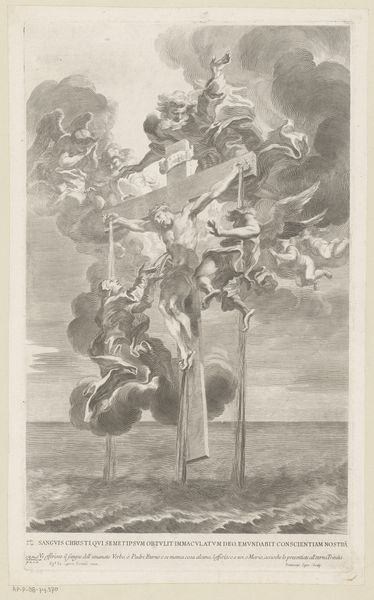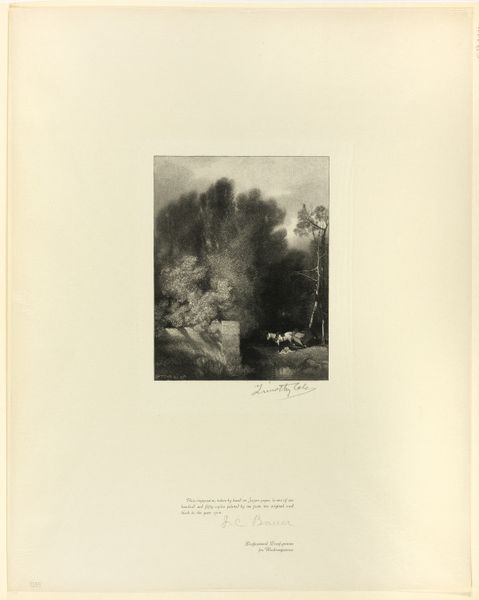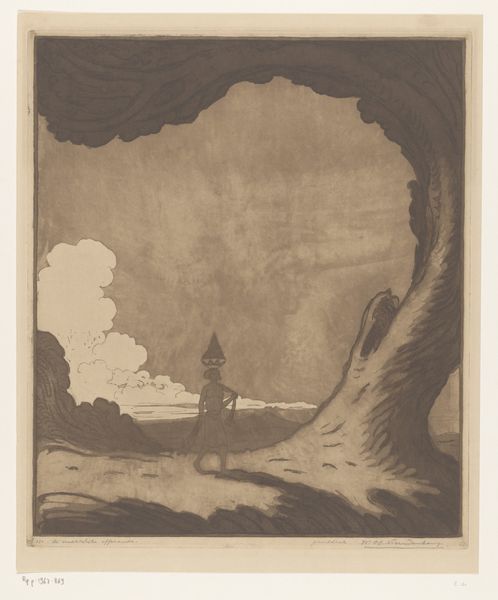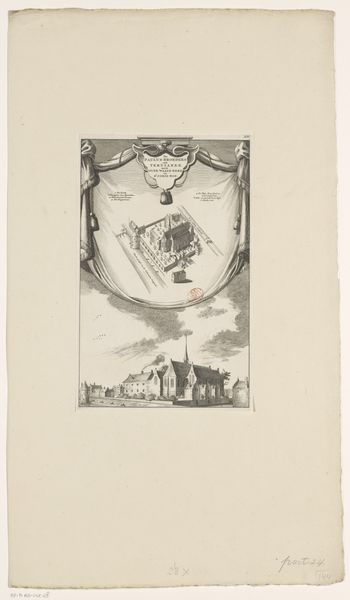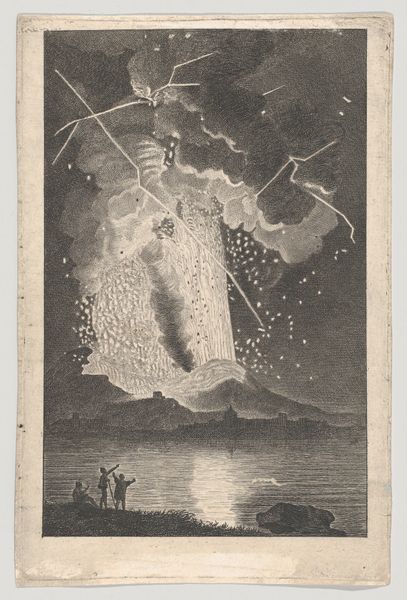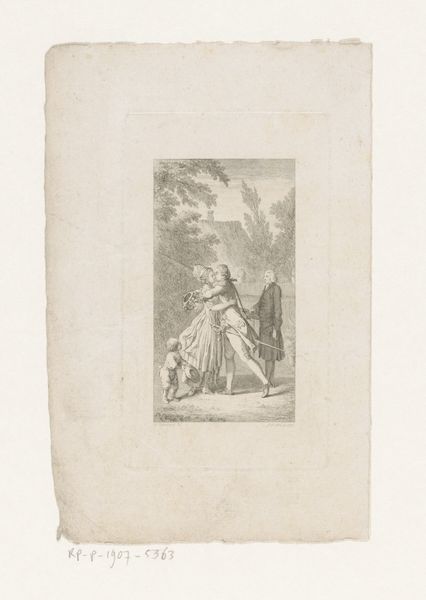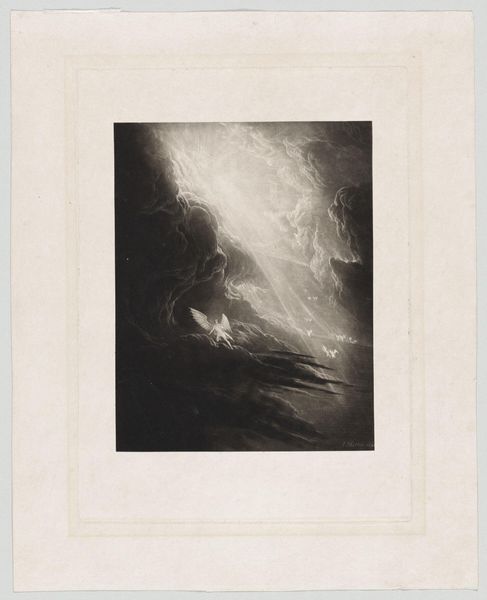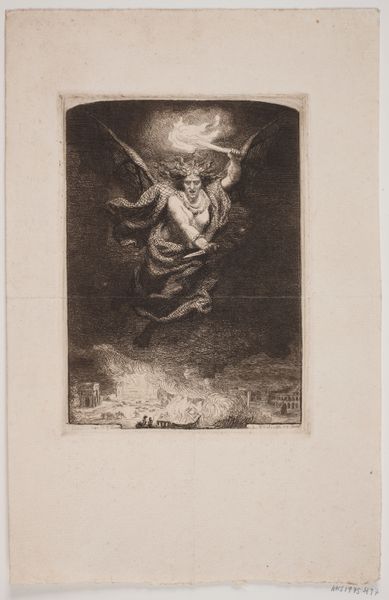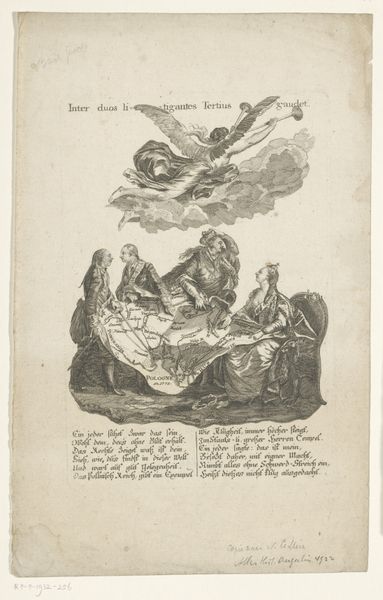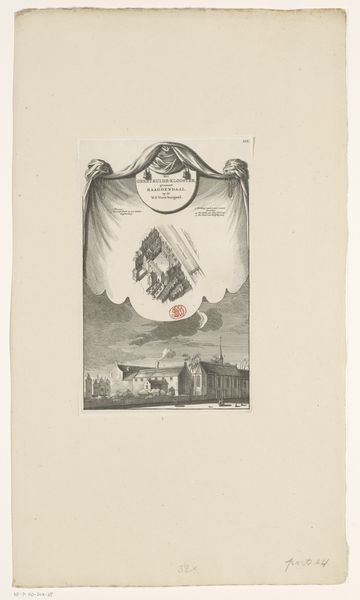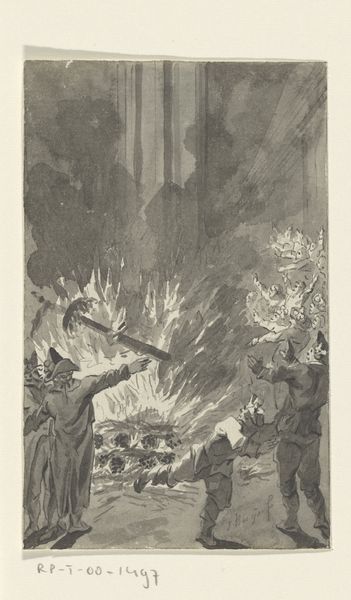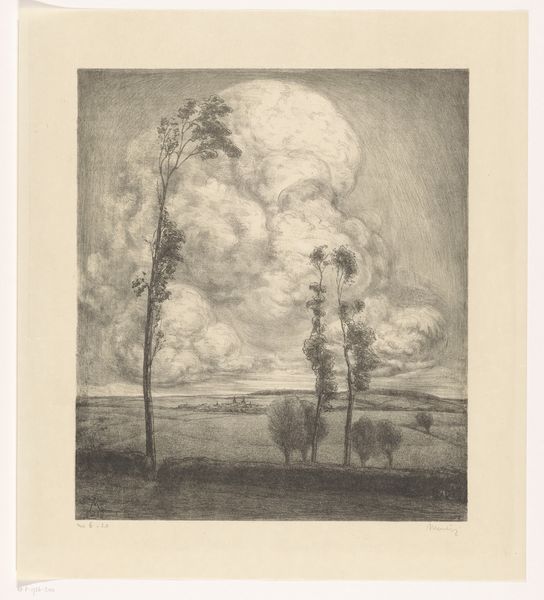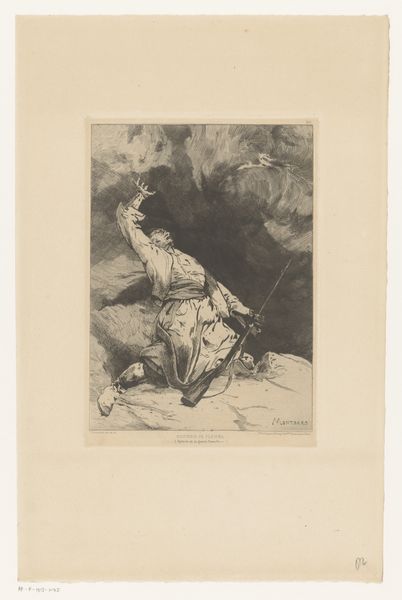
Verongelukken van de luchtballon van Pilatre de Rozier en Romain boven Boulogne, 15 juni 1785 1785
0:00
0:00
Dimensions: height 418 mm, width 286 mm
Copyright: Rijks Museum: Open Domain
Editor: We're looking at "Verongelukken van de luchtballon van Pilatre de Rozier en Romain boven Boulogne, 15 juni 1785," an engraving from 1785. It depicts a hot air balloon plummeting from the sky. The texture and scale create a real sense of foreboding. What do you see in this piece from a formal perspective? Curator: Indeed, observe the dramatic use of light and shadow. The bright expanse above the balloon contrasts sharply with the darker, descending form, creating a powerful visual tension. The line work, though delicate in its detail, constructs a scene of dynamic disarray. Editor: It’s interesting how the chaotic event is captured with such precise lines. Is there something to be said about that contrast itself? Curator: Precisely. The formal elegance of the engraving medium works as a strange counterpoint to the chaotic subject matter. The texture is not that of smoke and heat and panic, but a carefully constructed linear pattern. It asks us to consider what an artistic representation of disaster does in and of itself. What happens when destruction is organized through these meticulous marks? Editor: So, instead of conveying the literal event, the engraving is arranging disaster on a plane of observation. Curator: Exactly. The artist guides the viewer to look less at the event and more at the artistic composition of this singular occurrence. Editor: This is a far cry from a landscape of leisure we're used to seeing from this period. This exercise in analyzing this engraving’s structure rather than its subject matter has expanded my view of engravings and their possible impact. Curator: Likewise, analyzing it through a Formalist lens really drives home that the engraving presents an interesting collision between beauty, chaos, and disaster.
Comments
No comments
Be the first to comment and join the conversation on the ultimate creative platform.
